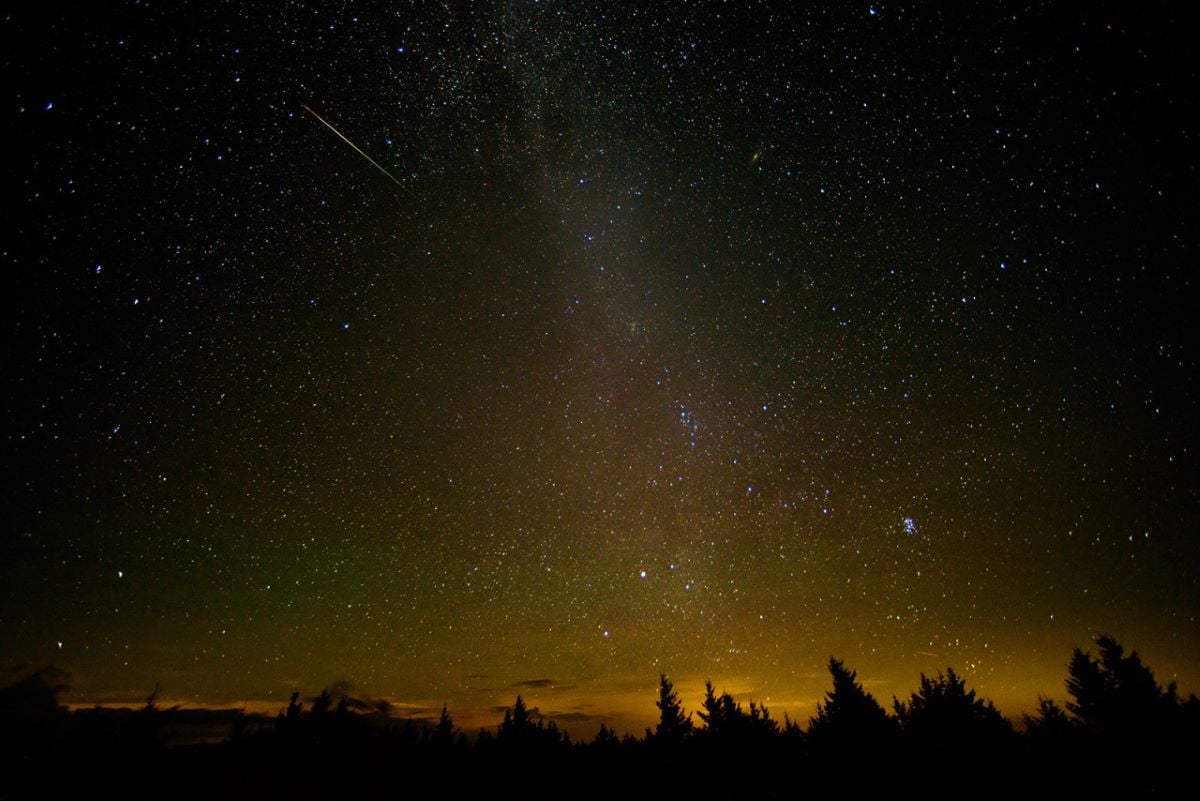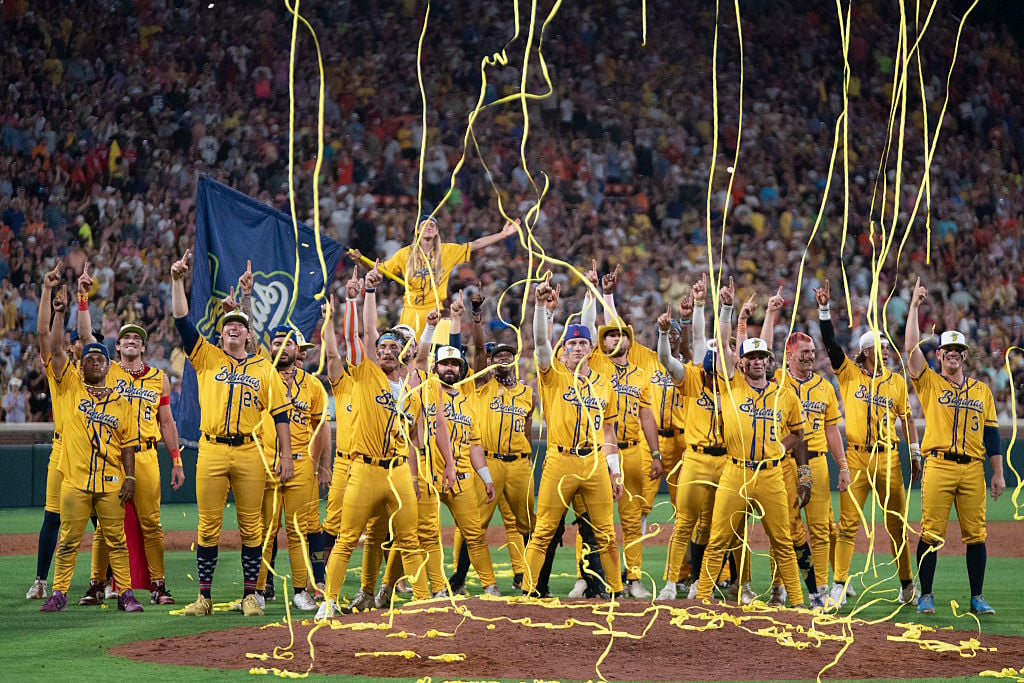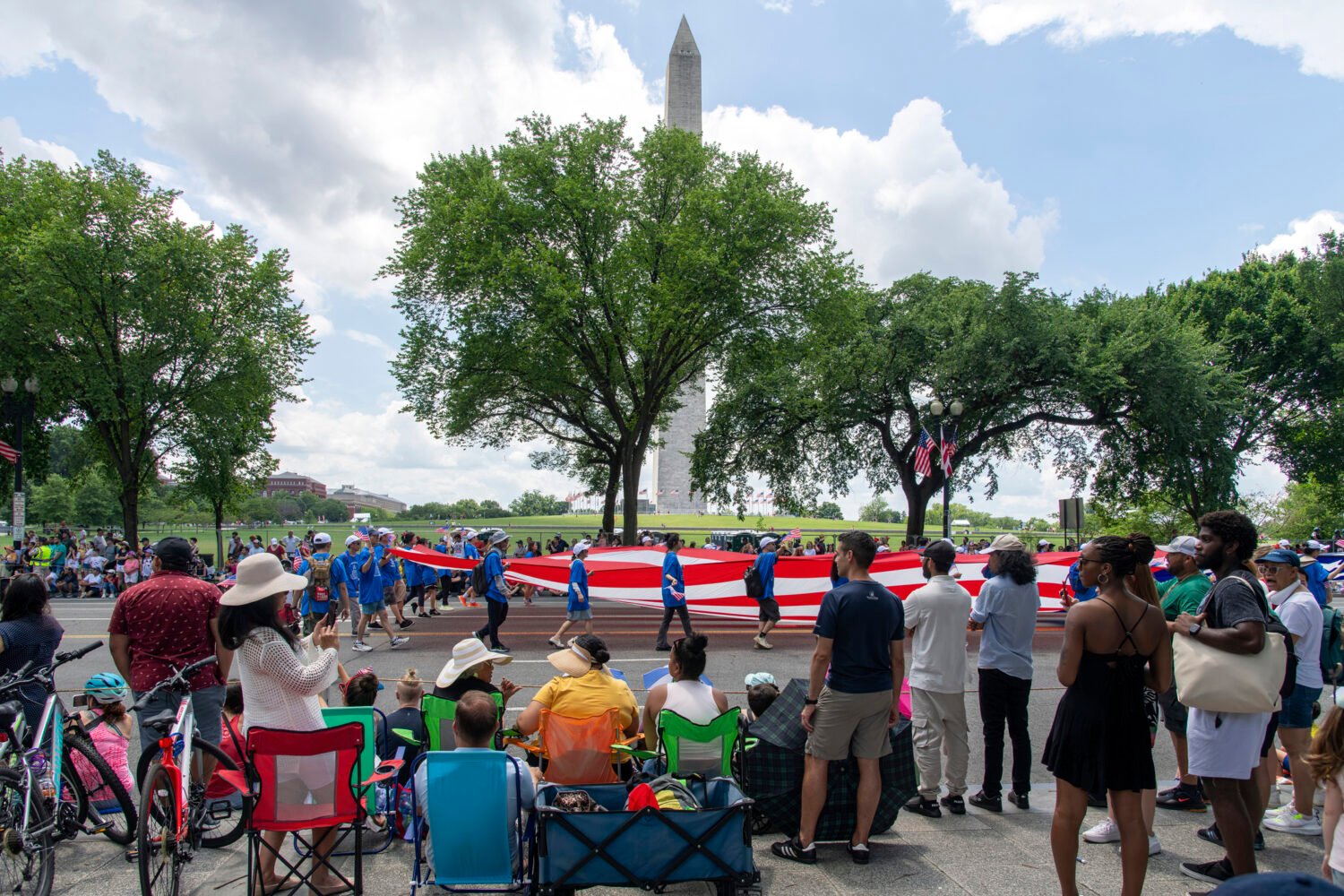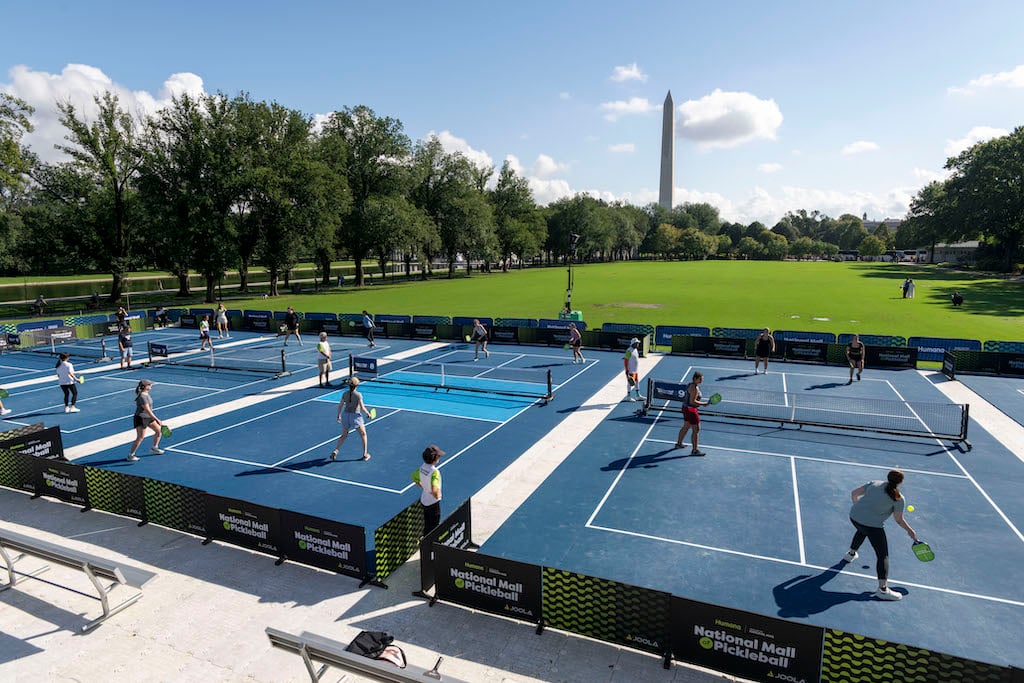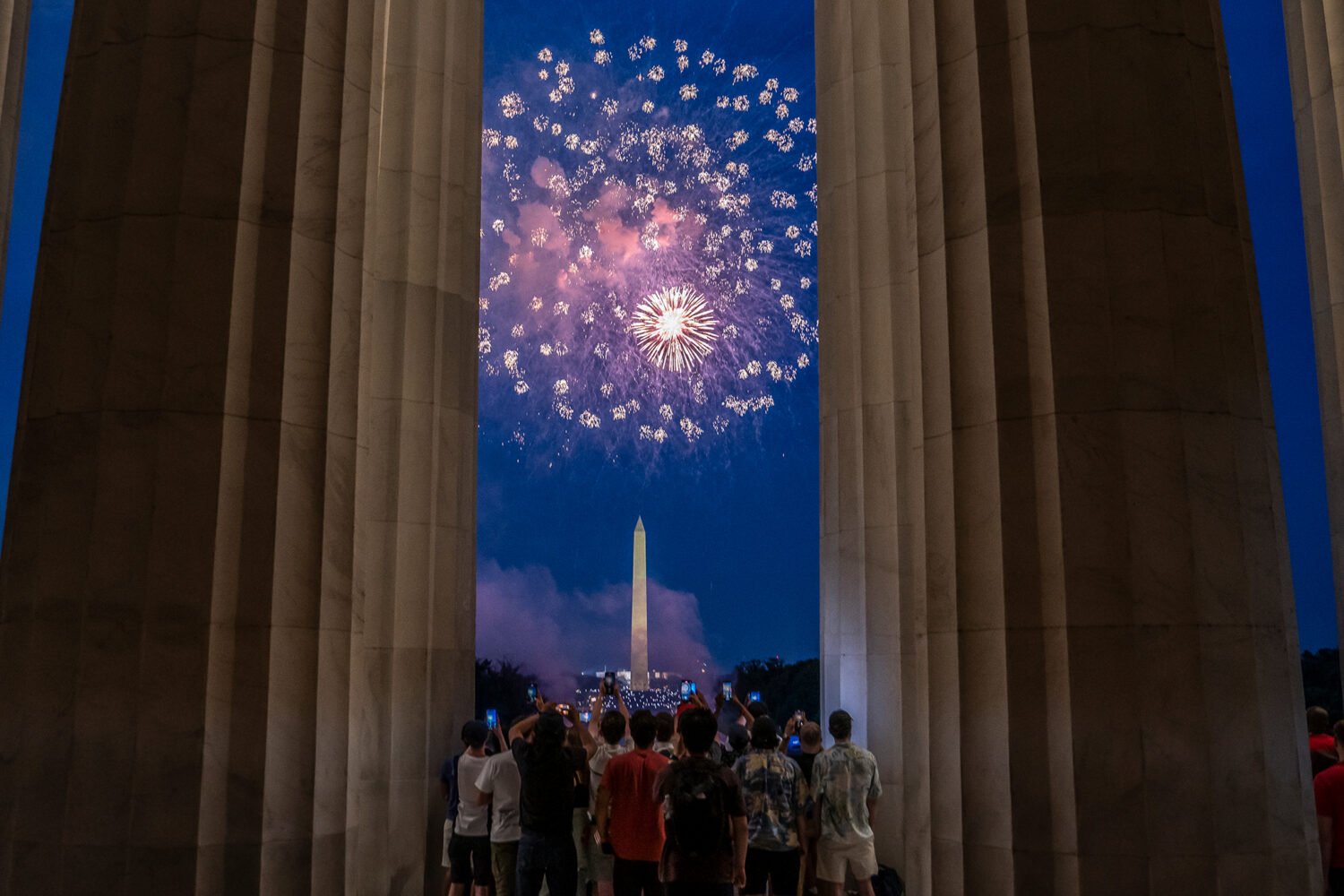The Perseid Meteor Shower will be extremely visible this weekend, so grab a blanket and head outside—the annual event is peaking Sunday, August 13. This year, there will be a waning crescent moon while the shower is overhead, meaning the sky will be darker and the meteors more visible.
“The best advice I can give folks who want to observe this meteor shower is to go to the darkest sky possible and stay up as late as possible,” says Carrie Fitzgerald, an astronomy professor at Montgomery College.
What Is the Perseid Shower?
The Perseid Shower occurs when the Earth, while rotating around the sun, passes through a patch of comet debris, resulting in darts of light in the sky. “They look like stars shooting across the sky, but it’s actually little pieces of comet debris burning up in the atmosphere,” Fitzgerald says.
The Perseid shower technically started in early July when the Earth started passing through some of the comet’s remnants and is projected to continue through the end of August after hitting its peak this weekend.
Where Should I Look?
For the best show, try to go somewhere dark and away from light pollution. Drive out to Charles or Calvert counties or head west of Fairfax to Loudoun County.
But don’t worry, Fitzgerald says, if you live in DC and aren’t up for a long drive, you may still be able to see the lights from your backyard.
The best time to see the shower will be after midnight and before dawn, when the shower will be at its highest and most visible point in the sky, Fitzgerald says. Also, keep an eye on the weather forecast: cloudy skies make for bad star (or meteor) gazing. As of Thursday afternoon, the forecast is projected to be clear.
If you want a more organized affair, head to Observatory Park at Turner Farm in Great Falls. It’s throwing a free Perseid shower watch party from 8:30 PM to 12:30 AM on Saturday, August 12. Observatory Park in Gaithersburg is hosting a movie screening and a viewing party from 9 PM to 1 AM, also on Saturday. The movie is still TBA; registration is required. Check online for updates since events may change depending on the weather.
Anything Else to Remember?
Bring a blanket or lawn chairs and bug spray. Fitzgerald recommends you point your toes Northeast since the Perseid radius will be below the W-shaped Cassiopeia constellation in the Northeast, and facing that way will give you the best odds at spotting the meteors. Stay off your mobile devices, too, since the light from your phone can taint your eyes.

